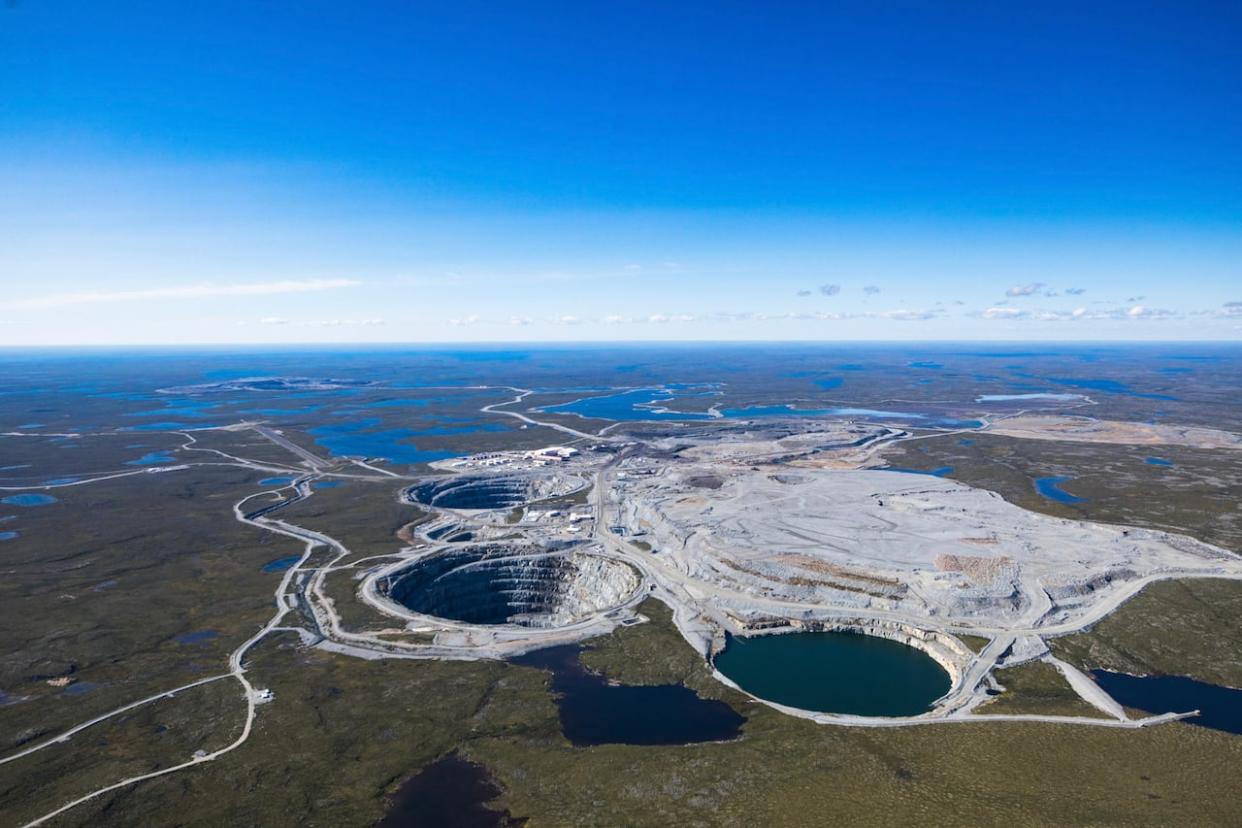Underground development at N.W.T.'s Ekati mine needs Tłı̨chǫ gov't sign-off, says regulatory board

If the company that owns the Ekati diamond mine in the N.W.T. wants to proceed with an underground mining project, it has to get sign-off first from the Tłı̨chǫ government, a regulatory board has ruled.
Just north of Ekati's main camp — and 300 kilometres northeast of Yellowknife, give or take — there's already an open pit to access kimberlite, called the Sable open pit. An underground development would aim to pull out more of that diamond-containing rock.
On April 24, the Wek'èezhìı Land and Water Board deemed the proposed Sable underground development a "major mining project" and thus bound by requirements under the Tłı̨chǫ Agreement.
The definition applies to projects with capital costs of more than $50 million that will employ at least 50 people annually for the first five years.
The board decision means the Arctic Canadian Diamond Company, which owns Ekati under parent company Burgundy Diamond Mines, and the Tłı̨chǫ Government have to either negotiate an agreement or decide together that an agreement isn't needed, by May 29.
The mine's owners could also dispute the board's classification and back that up with evidence, which would need to be done before May 1.
With two of its three other kimberlite sources ending in the next couple years, the company "risks the financial viability and sustainability of the business" without the underground project, Burgundy wrote to the board on April 16.
"An interruption in diamond production at Ekati Mine resulting in temporary mine closure and furlough of employees would be very difficult from a business perspective," the company stated.
"Equally as important, it would cause hardship for northern employees and would be a potentially fatal business risk due to the loss of cashflow and costs associated with restarting operations."
Burgundy had applied for two land use permits and changes to its water licence in order to proceed with the project. The board has also ordered a routine public hearing on the land use permits.
In documents filed to the board, Burgundy described the development as a necessary one in order to secure Ekati's future.
Burgundy describes it as a critical project that would help extend the operating life of Ekati. It has to be done through underground mining, the company said, because other approaches — including underwater remote mining once pitched as the future of the mine — have "fatal flaws."
Burgundy wants to start developing the underground project this year, and start extracting ore by 2026. It would need to build an entrance, ramp and ventilation in the early stage of development, and once in operation, would haul out half a million tonnes of kimberlite ore in 2026, followed by 1.6 million tonnes annually for the next four years.
It said the project could be developed with little environmental impact.

